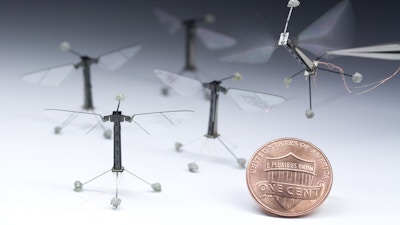The Wyss Institute’s roots are in the future, when engineered materials and devices could approach the complexity of living systems
The Wyss Institute for Biologically Inspired Engineering at Harvard University is more than a research institute – it was launched on a mission to develop biologically inspired materials and devices that will solve critical medical and environmental problems, and to translate these real-world technologies into products that have profound impact on society and the environment.
The Wyss Institute emerged from the efforts of Harvard faculty members who had been challenged by the Harvard Provost to envision the future of bioengineering across the university. The faculty determined a tipping point has been reached in the history of science and engineering: We are beginning to understand enough about how nature builds, controls and manufactures, that we are now at a point where we can leverage biological principles to develop new engineering innovations.
This new field of Biologically Inspired Engineering, they envisioned, would lead to the creation of bioinspired devices and materials that could transform industry and the environment as well as medicine. Faculty members who share a passion for interdisciplinary high-risk research came together around this common vision for bioinspired technology development.
Seed funding from the Harvard Institute for Biologically Inspired Engineering (HIBIE), received in January 2008, initially helped to catalyze new collaborations on projects ranging from nanomaterials that promote organ regeneration to robots that cooperate in swarms.
HIBIE was reformed into the Wyss Institute in January 2009 upon receiving a $125 million dollar gift from Harvard Business School alumnus and Swiss philanthropist Hansjörg Wyss. At that time, it was the largest single gift every received by Harvard University.
Inspired by the principles of self assembly that Nature employs to manufacture organic and inorganic structures, the Institute’s faculty, staff and collaborating institutions (which today number 17) formed an alliance to confront this bioinspired engineering challenge. Much like the way Nature builds, they have joined efforts through a process of self assembly, their research collaborations arising from shared interests in high value applications while bringing expertise from different disciplines ranging from synthetic biology, genome engineering and nanotechnology to adaptive materials, medical devices, bioinspired robotics, and microsystems engineering, among others.
Based upon the rapid acceleration of innovative technologies ignited from this alliance, in 2013 Hansjörg Wyss doubled his original gift to further support the growing success of the Wyss Institute translation engine.
Today, researchers at the Wyss Institute continue to draw inspiration from the design strategies that living systems use to adapt and compete for survival, with a dedicated focus on developing real-world technologies and actively translating them into the commercial marketplace that is rarely seen in academia.
